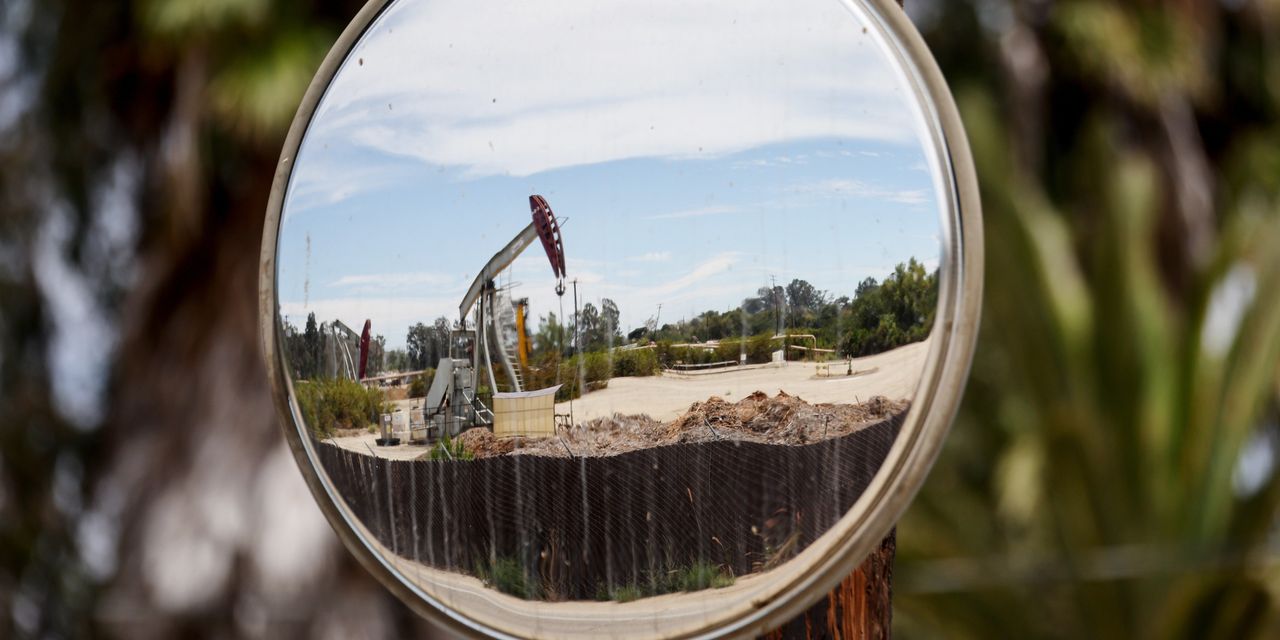Oil futures rose Friday, with benchmarks on track for a fourth straight weekly rise on expectations the second half of 2023 will see a tightening of supplies in the crude market.
Price action
-
West Texas Intermediate crude for September delivery
CL00,
+1.23% CL.1,
+1.23% CLU23,
+1.23%
rose 46 cents, or 0.6%, to $76.11 a barrel on the New York Mercantile Exchange, leaving front-month prices for the U.S. benchmark set for a 1% weekly advance. -
September Brent
BRN00,
+1.10% BRNU23,
+1.10% ,
the global benchmark, was up 57 cents, or 0.7%, at $80.21 a barrel on ICE Futures Europe, on track for a 0.4% weekly rise. -
Back on Nymex, August gasoline
RBQ23,
+1.56%
rose 1.2% to $2.777 a gallon, while August heating oil
HOQ23,
+2.69%
jumped 1.9% to $2.7156 a gallon. -
August natural gas
NGQ23,
-2.07%
fell by 1% to $2.729 per million British thermal units, on track for a weekly rise of more than 7%.
Market drivers
Oil futures have bounced in July, with WTI up over 7% and Brent up more than 6%, trimming year-to-date losses, FactSet data show.
Weakness in crude prices in 2023 has been attributed to worries that interest-rate rises by global central banks will spark a sharp economic downturn, while a disappointing rebound by China after the lifting of strict COVID-19 curbs has also been a factor.
Any upside on oil is “capped by the gloomy outlook for the Chinese economy,” said Ricardo Evangelista, senior analyst at ActivTrades. “China is struggling to recover the growth levels we had been used to in the pre-pandemic years and, being the world’s largest crude importer, that is denting future oil demand prospects.”
The announcement on Wednesday that Beijing plans to deploy economic stimulus measures brought “some hope to oil traders,” he said in market commentary. “Such measures could reset expectations, upgrading demand forecasts and boosting oil prices.”
Expectations central banks are near the end of their interest rate hiking cycles and that the economy may prove more resilient than feared have accompanied crude’s rebound. Supply cuts by Saudi Arabia and Russia are also kicking in amid expectations the market was set to move into deficit in the second half.
“As markets are beginning to recognize supplies tightening, investors will keep an eye on the U.S. Federal Reserve meeting next week that is currently expected to raise rates another 25 basis points,” StoneX’s Kansas City energy team, led by Alex Hodes, wrote in Friday’s newsletter. All eyes will be on Fed Chairman Jerome Powell’s speech, “looking for any signs on whether this could be the final rate hike this year, or [if] he expects more to come.”
WTI, meanwhile, was trading not far below its 200-day moving average, which stands at $77.17 a barrel Friday based on the most actively traded contract, according to FactSet. The 200-day moving average is seen as a proxy for a market’s long-term trend. WTI hasn’t traded above the 200-day moving average since late August.
“Violation of any 200-day moving average, that has been riding an unbroken streak for that long, will likely attract buy stops from specs, an obvious entry point for new length, and could also spawn computer generated flows,” said Robert Yawger, executive director for energy futures at Mizuho Securities, in a note.
Meanwhile, natural-gas futures looked to notch a weekly rise of more than 7%, but held onto a month-to-date loss, with prices down more than 30% so far this year.
Read: Why scorching summer temperatures haven’t yet led to a lasting rally for natural gas
Read the full article here





